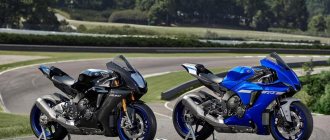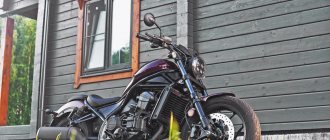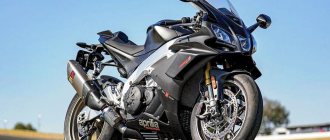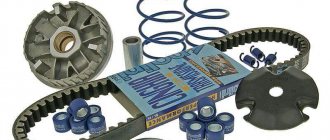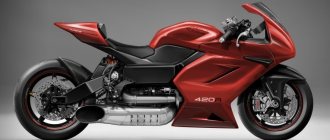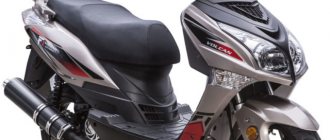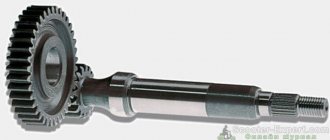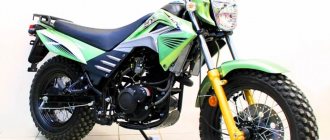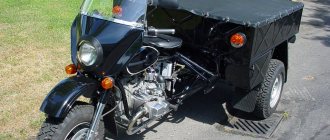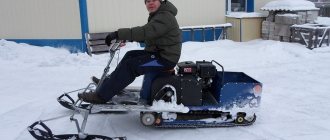Who can say whether a 600cc motorcycle is too much or too little? In fact, the answer depends on what class of motorcycle we are talking about. There is no universal criterion here, and a 600cc enduro will be huge and heavy, but for a cruiser such an engine size is considered small. But the most common type of two-wheeled equipment remains classic road motorcycles, for which 600cc is the most common and popular displacement. In some ways, these bikes are inferior to “liters”, and in some ways they are even superior to them.
Advantages and disadvantages
If we talk about sportbikes and classics, then we can highlight a number of noticeable features characteristic of forced in-line engines of this cubic capacity. All of them are to one degree or another similar to each other, despite their individuality. The Yamaha YZF-R6, for example, has several dips and catches in the torque curve, while some Honda CB600F Hornet, on the contrary, has an easy-going character. However, let’s compare “six hundred” with “liters”, without going into details, and consider their strengths and weaknesses:
pros
- Lower purchase cost;
- Less weight;
- Not so much power that some 600cc models are considered a suitable motorcycle for a beginner.
Minuses
- The maintenance cost is similar to that of a “liter”;
- The 600 has to be turned more actively to high speeds in order to achieve good dynamics;
- Fuel consumption in some cases can exceed that of a liter engine, since the engine has to work harder;
- Many 600cc sportbikes are characterized by very nervous behavior at low speeds , which creates inconvenience when driving around the city.
Classic and sportbikes
The best 600cc motorcycles usually fall into this category. This is the magnificent Suzuki GSX-R600, and the evil Yamaha P6, and the incredibly popular Honda SBF 600F, and the favorite of novice bikers, the Kawasaki ER-6... They are all good in their own way, despite completely different purposes. Most of them have one thing in common - a powerful 4-cylinder engine, which fully reveals its character only at high speeds. Standing somewhat apart is the aforementioned ER-6, which features an in-line twin that is less powerful but much more flexible, making this road bike an excellent option for beginner motorcyclists.
In the last ten years, Chinese brands have also entered the 600 market. At one time, the Russian-Chinese Stels Benelli 600, the design of which was developed by the famous Italian company Benelli, which was completely bought out by the Chinese motorcycle giant, made a splash. And later he was accompanied by the CFMoto 650NK, externally copied from the Kawasaki EP 6. And, despite the fact that the “Chinese” are inferior to the “Japanese” in technical characteristics, they have enough horses to not let the owner get bored. And the day is not far off when some Chinese motorcycle will be able to outshine its famous competitors.
Four-stroke motorcycle engines.
Resonant mufflers and L-shaped piston rings, disc valves, multi-channel blowing and other design tweaks helped two-stroke engines gain popularity. However, the development of four-stroke engines did not stand still. Japanese and Italian companies; have made significant progress in improving them. It is known that two- and four-cylinder engines are better balanced than single-cylinder ones. The larger the displacement of a single-cylinder engine, the more noticeable the vibrations transmitted to the frame, suspension, and driver. This results in loosening of threaded connections, mechanical malfunctions and breakdowns, and driver fatigue during long trips. Stopping the engine on rubber cushions (IZH-Planet-Sport, MC-TS250 and Norton-Commando), as is done on cars, allows you to cure this ailment. But it is not always possible to use an elastic engine mount - either for technical or economic reasons. The output is a multi-cylinder design. With a four-stroke engine, this is easier to do—the engine is compact in width. In a two-stroke engine, the inevitable oil seals between adjacent cylinders, the need to use roller bearings for the connecting rods and, as a consequence, the use of a composite crankshaft, and finally the wide bypass channels make it difficult to use designs with more than two cylinders - the engine turns out to be excessively wide. The Japanese, on a four-stroke model of the 750 cm3 class, tried, despite the two-cylinder engine, to achieve the same good balance and smooth operation as with a four-cylinder engine. As a result, it was necessary to resort to constructive complications - the installation of two balancing shafts with counterweights connected by a chain to the crankshaft. If we talk about the number of cylinders on cars of different classes, it should be noted that heavy ones, as a rule, have two or more cylinders. Medium motorcycles are in most cases two-cylinder, and only on light models is one cylinder the most common. First, four-cylinder, four-stroke engines mounted across the frame appeared on the Zhilera, MV-Agusta, and Honda racing motorcycles. Such machines were also built in our country by the Serpukhov VNIImotoprom. One of his models, “S-364”, with a displacement of 350 cm3, developed a power of 59 hp. With. at 13,000 rpm, and the other, “S-565”, with a working volume of 500 cm3 80 l. With. at 12,000 rpm. The racing "fours" were followed by road ones - their production was launched by Kawasaki, the Italian MV-Agusta and Moto-Guzzi. In 1973, even a six-cylinder model, the Benelli-Sey, appeared on the market. Its engine, obviously the widest (800 mm) among motorcycles, protrudes beyond the dimensions of the handlebars by 10 mm on each side. True, in the place where the driver’s legs are located, its width is smaller - 450 mm. By the way, for cars with opposed cylinders (BMW, Ural), the engine width (680-720 mm) is only slightly inferior to the Benelli-Sey. If we talk about most two-, three- and four-cylinder production motorcycles, they are located in a row across the car. Boxer engines are currently produced by only three factories: in Russia (Irbitsky and Kyiv) and Germany (BMW). Equally rare is the V-shaped arrangement of cylinders, which is found only on heavy models of Harley-Davidson, Moto-Guzzi and Ducati. Multi-cylinder engines have small cylinder diameters - 47 mm for the Honda KV300-Four and 56 mm for the Benelli Sea. As a result, the small size and weight of pistons, valves, and parts of the crank mechanism make it possible to significantly boost multi-cylinder engines in terms of speed - smaller inertial loads arise. Thus, in four-cylinder engines, the number of revolutions corresponding to maximum power is on average 25-35% higher than in two-cylinder engines, and reaches 8000-9500 per minute. If the speed of two-stroke engines is limited by the strength of the connecting rod bearing cage, . then for four-stroke engines it is determined by the ability of the valve mechanism to withstand inertial loads; As is known, these loads are proportional to the mass of the part and its acceleration. When a certain number of revolutions is reached, the inertial load on the valve, its rocker arm, and the push rod reaches such a value that the spring force is insufficient to maintain constant contact between the valve and the cam. To increase the spring force, you need to change its dimensions, and in the cylinder head, every millimeter is worth its weight in gold. The conclusion suggests itself that it is necessary either to reduce the mass of the valve mechanism parts or to abandon the spring and close the valve using a mechanism devoid of an elastic element. Heads with four, rather than two, as was done before, valves per cylinder are no longer uncommon today. They are used on four-stroke Yamaha FZ400 and Kawasaki ZZR400 models, not to mention racing motorcycles. To reduce the mass of the reciprocating parts of the valve mechanism, more and more companies are beginning to abandon the design with push rods and rocker arms in favor of a more complex option with a cam shaft located in the cylinder head. In particular, it uses this design on all its four-stroke models - from 350 cm3 to 1800 cm3. However, in it the cams do not act directly on the valve, but through rocker arms that have a certain inertia. Therefore, the next step that the engineers who created high-speed motorcycle engines took was the use of two (intake and exhaust) cam shafts. This design was previously the exclusive privilege of racing engines. Both are located in the head and act on the corresponding valves through lightweight pushrods. The weight of reciprocating moving parts is kept to a minimum. To evaluate the capabilities of each of the three listed schemes, let us turn to this example, based on average statistical data. If we take a four-stroke single-cylinder motorcycle engine with a displacement of 250 cm3 and compare the speed options with a rod valve drive, one and two camshafts, we get 7200, 8000 and 9000 rpm, respectively.
The Italian has for many years stuck to the so-called desmodromic valve drive. There are no springs closing the valve at all, and it not only rises, but also returns to place under the influence of the cam. This mechanism requires very precise and careful execution and, unfortunately, has not yet become widespread. As for the visible light springs, they only serve to compensate for gaps in the mechanism. Desmodromic distribution allows you to painlessly reach 8000-8500 rpm. What are the capabilities of two-stroke engines? For comparison, let’s again take single-cylinder cars of the 250 cm3 class. The maximum speed for them today is 6800-7500 per minute. The increase in speed required a revision of the design of the ignition system. Already at 7000-7500 rpm, conventional type breakers could not provide two-stroke engines with reliable ignition. At high speeds, the inertial loads on the breaker hammer reached such values that it lost contact with the cam and could not keep up with its movement. It was necessary to create contactless systems using transistors, which are now widely used on motorcycles. Along with the ignition system, the electrical system has undergone significant changes in recent years. Electricity consumers now have the addition of direction indicators, which are mandatory in many countries, and electric starters have come into use. On the contrary, no major innovations have appeared in the food system over the past decade. It is, however, necessary to use carburetors with a float chamber located not on the side of the mixing chamber, but concentrically with it, as was done on the latest model “IZH-Planet-Sport”. Thus, with large rolls of the motorcycle, interruptions in the operation of the carburetor are eliminated.
As for the fuel injection system, which is currently used in more than two dozen models of production passenger cars, its use in the motorcycle sector has so far been limited to certain racing models. True, at the end of 1973, the French company already demonstrated a sample of a road motorcycle with fuel injection.
On multi-cylinder engines, in most cases, a carburetor is installed on each cylinder. This is done on “Kawasaki-C4”, “Honda-KB500>> And “Moto-Guzzi-GTC350”, “Ural”, “Suzuki-GT750” And many other models. Adjusting two carburetors for a two-cylinder engine and four for a four-cylinder engine to operate synchronously certainly presents some difficulties. However, switching in these cases to one or two carburetors, respectively, means a loss in power of 15-20%. The question of choosing a lubrication system on four-stroke engines is closely related to the design of the main and connecting rod bearings. Roller bearings, which were ubiquitous on motorcycles in the past, are now being replaced by sliding ones, of the automotive type. There are several reasons for this. Firstly, plain bearings are more durable and their replacement is much easier. Secondly, they make it possible, without increasing the size and weight of the engine, to make the crankshaft stronger and more rigid, which, with increased power and speed of engines, becomes of no small importance.; True, sliding bearings are more demanding on oil filtration and require it to be supplied under higher pressure than roller bearings. All these pros and cons were carefully weighed by specialists from leading motorcycle plants, and now more than a dozen models are already equipped with plain bearings, solid crankshafts and split connecting rods. Among them are the Soviet Dnepr cars, the Japanese Yamaha TX750 and Hawkda KB500; Italian “Beneli-Sey” and <<Moto-Guzzi-B7>>, English “Triumph”. Among two-stroke engines, interesting models have appeared with an independent supply of lubricant to the crank mechanism. This is because lubrication with a mixture of fuel and oil causes “smoky” exhaust, which contributes to air pollution in large cities. The so-called separate lubrication system with an independent pump and dispenser that supplies different amounts of lubricant depending on the engine load is already used nearby by Suzuki, YAVA, as well as the Izhevsk plant.
Road
From chopper drivers you can often hear the contemptuous “less than a liter is not a chopper,” and this point of view can be understood. This class of steel horses almost always uses deformed V-shaped 2-cylinder engines, low-speed and high-torque, so they need a large volume to achieve sane power. For this reason, bikes with engines of one and a half liters or more are popular, and “six hundred” are considered equipment for beginners. The most popular common representatives of this category are the Honda Steed 600 and Yamaha XVS 650 Drag Star. The Suzuki LS650 Savage is much less popular, and Kawasaki has never had a cruiser in this segment. It is worth noting that the above-mentioned Hondas and Yamahas are built on the same platform as their 400 cc counterparts, and differ from them mainly only by the CPG. Suzuki Savage, on the other hand, stands somewhat apart, and differs from its 400 cc counterpart not only in its engine, but also in its belt drive instead of a chain drive.
Contract engines for Honda motorcycles: what are they?
Honda is a Japanese manufacturer of some of the most reliable, economical and fastest motorcycles on the world market.
The company presents several models of motorcycles: classic, sports and dual-use models. Honda also produces scooters, mopeds and four-wheeled all-terrain vehicles. With proper and careful operation, Honda engines are practically invulnerable, but they have their own characteristics and requirements. For example, some models of this brand are characterized by a high degree of boost; such engines need replacement much more often than others. Also, Honda engines are quite difficult to repair and are demanding on the quality of the oil. Oddly enough, this primarily applies to highly qualified engines. But in general, Honda engines are of high quality and have minimal defects, which distinguishes them from spare parts of other brands.
offers a large selection of high-quality contract engines of the Japanese brand “Honda”. The advantage of Japanese contract engines is that they are used in different road conditions: on smoother and even roads. Moreover, engines in Japan are changed much more often and they simply do not have time to fail, maintaining good performance.
Enduro and tourenduro
Imagine a motocross motorcycle with a molded 600 cc engine! The result will be a real monster, angry and rebellious, which is why a similar technique exists, but it is only used by motocross professionals. And regular enduros are usually equipped with smaller engines, around 400 cc. see, because an increase in cubic capacity inevitably entails an increase in mass, which is critical when driving off-road. Attempts to create a large enduro have been made, for example, the Suzuki DR800 S Big, equipped with a huge single-cylinder engine that vibrates like a Friendship chainsaw. But this model was not popular, so off-road bikes to this day, with rare exceptions, are equipped with engines of smaller capacity.
If you are not interested in even the best road motorcycles, but in your dreams you see endless steppes and mountain paths, you should pay attention to the tourenduro. Motorcycles in this class are usually distinguished by their large weight, powerful power units and large size, but there are also lightweight fighters among them. The most popular models are the Honda XL600V Transalp (there are also motorcycles with 650 cc and 700 cc engines) and the Kawasaki Versys 650. The Chinese from CFMoto have also released their competitor into the ring, offering the public the CFMoto 650MT model. But you can only choose a bike “for yourself” and understand exactly how many cubes you need through experience.
Motorcycle engines - domestic and imported motorcycle engines for walk-behind tractors, motorized towing vehicles, cultivators, motorcycles and many others. etc. You can buy a motorcycle engine from us with delivery to any city in Russia.
If you want to buy a motorcycle engine
, this online store offers a wide variety of models. Domestic and imported products for walk-behind tractors, towing vehicles, cultivators, motorcycles and the like are delivered to any Russian city.
Agromotor engines are reliable equipment for motor cultivators and motorized towing vehicles. Their power is on average 10 hp, the engine type is four-stroke. The weight of individual models starts from 15 kg and reaches 31 kg. The most powerful engine models
equipped with manual and electric starter. They are designed for professional walk-behind tractors, gas generators, etc. They can be used both in summer and winter - they start up equally easily.
Internal combustion engines
B&S (Briggs & Stratton) are made in the USA. They are designed for the operation of walk-behind tractors and garden equipment (lawn mowers, cultivators, garden vacuum cleaners). Four-stroke carburetor engines are air cooled. Their power varies from 3 to 25 hp. Some models are more suitable for amateurs (Quantum), others - for professionals (Vanguard).
Gasoline engines
Honda differ in the number of cylinders, valve arrangement, cylinder group design, different shaft designs and the presence of a gearbox. The capabilities of the engines depend on these indicators. You can even install them on power equipment. They are extremely in demand all over the world. Their production reaches 4 million copies per year.
Engines from the largest Chinese manufacturer Lifan have a fairly low price and are not inferior in quality to other models. Typically engine power
- about 5 hp, but there is also a monster Lifan 2V77F with 18 hp. for installation on buggies, homemade units and all-terrain vehicles.
MTR engines will be absolutely indispensable in winter for snow removal. They may seem heavy, but in difficult times they will not let you down. They are distinguished by their breadth of application and ergonomics.
Robin Subaru engines are very strong, reliable and durable. The original air purification system, the use of a steel crankshaft on ball bearings and the presence of an electronic ignition system ensure a long service life of the motorcycle engine. This technique works almost silently.
Ruslight engines are similar to the corresponding Honda units. They have average power and are equipped with a reduction chain variator. It is recommended to install them on walk-behind tractors, cultivators, snowmobiles, karts, etc.
